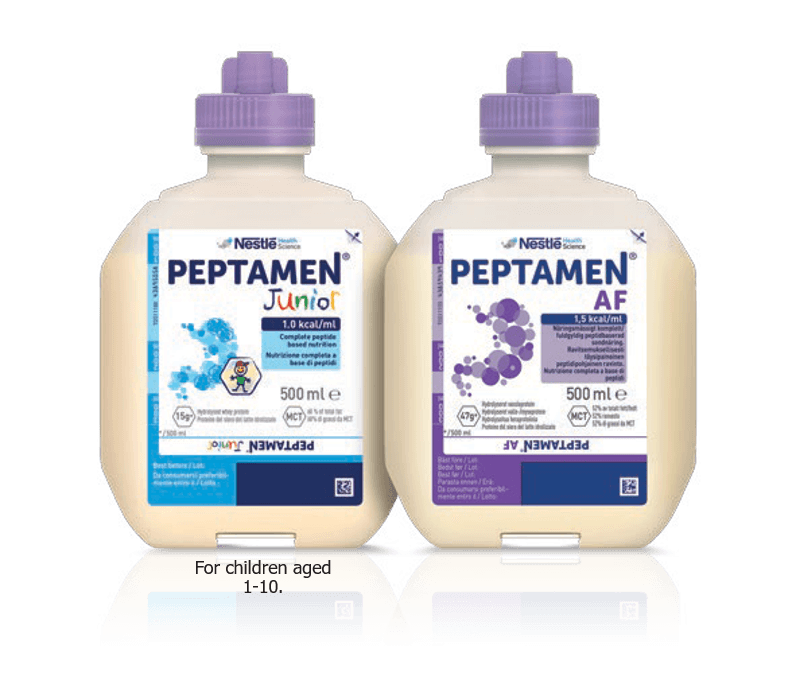TUBE FEEDING INTOLERANCE
TROUBLESHOOTING GUIDE
Nausea / Vomiting / Reflux
Check for:
Anxiety ❯
POSSIBLE SOLUTIONS
Reassure the patient, provide additional instructions and psychological help based on their needs
Medication side effects ❯
POSSIBLE SOLUTIONS
Evaluate medications, consult pharmacist3
Gastro-intestinal obstruction ❯
POSSIBLE SOLUTIONS
Discontinue tube feeding until medical evaluation3
Tube position ❯
POSSIBLE SOLUTIONS
Check for proper placement (e.g., nasogastric tube has not migrated into small bowel)
Consider post-pyloric feeding below the Treitz ligament1,2
Note: attention to oral hygiene is important with enteral nutrition as microbial contaminations and alteration of microbiota in the oral
cavity have been associated with aspiration pneumonia10
Formula odour ❯
POSSIBLE SOLUTIONS
Consider closed system feedings; consider antiemetic agent if appropriate3
Positioning of patient ❯
POSSIBLE SOLUTIONS
Elevate the headboard to 30-45 degrees during continuous feeding unless contraindicated; for intermittent feeding, elevate the headboard to the upright position during feeding and at least 30 minutes after2,3
Delayed Gastric Emptying ❯
POSSIBLE SOLUTIONS
Assess abdomen, review medical history for any underlying motility disorders, consider prokinetic medications, monitor glucose control if relevant3; consider a whey-based formula7-9
Rapid infusion rate ❯
POSSIBLE SOLUTIONS
Review feeding regime, reduce rate/volume or adjust feeding schedule as needed, use room temperature formula3
Fecal Impaction / Constipation ❯
POSSIBLE SOLUTIONS
Assess abdomen; disimpact as needed using enemas; monitor stool frequency and consistency3
Formula characteristics ❯
POSSIBLE SOLUTIONS
Consider a whey-based formula to facilitate gastric emptying7-9; consider a lower fat, lower osmolarity and neutral pH formula

